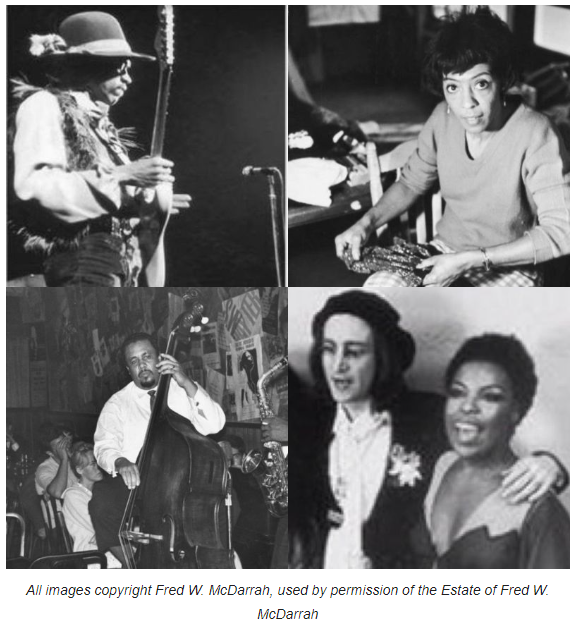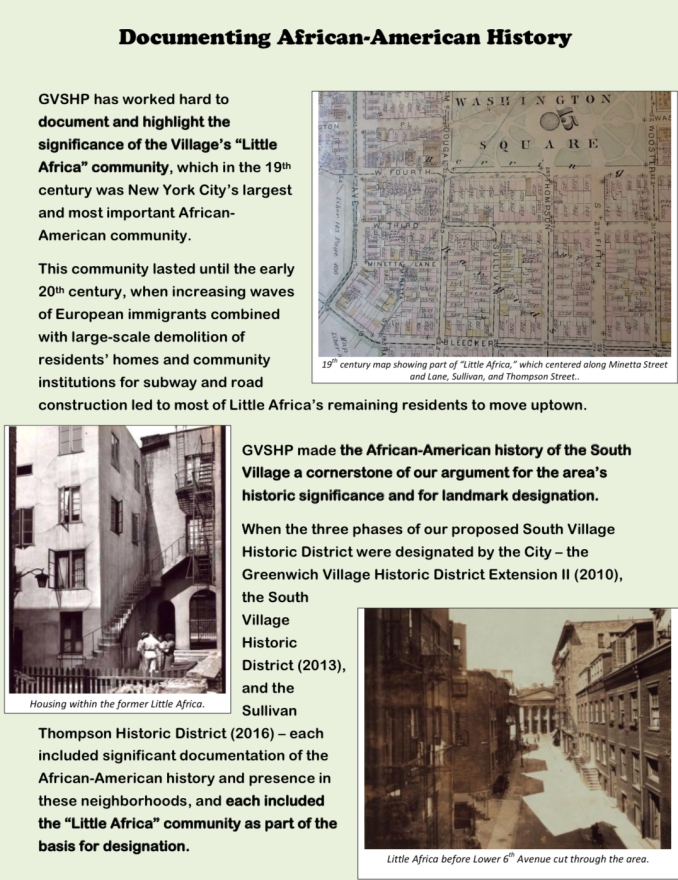Black Lives, Black Histories
The first non-native settlers of what are today Greenwich Village and the East Village in the 17th century were African Americans, many of whom struggled to secure their freedom from slavery in New Amsterdam. In the 19th century, Greenwich Village was the home to New York’s largest African American community, and during the Civil War African Americans in both the East and West Village were subject to brutal attacks during the Draft Riots. In the 20th century the East Village was one of the centers of African American jazz and blues, the neighborhood which Charlie Parker, LeRoi Jones, and Huddy “Leadbelly” Ledbetter all called home, while Greenwich Village pioneered racially integrated social, cultural, and entertainment spaces, attracting great African American writers as residents such as James Baldwin, Lorraine Hansberry, and Richard Wright. In spite of this, neither neighborhood was free of racial bias; in a notorious 1976 attack, black and Hispanic youth were targeted in violent assaults in Washington Square, while in 1983 young East Village African American artist Michael Stewart was killed in police custody after being arrested at the 14th Street and First Avenue subway station.
The African American history of our neighborhoods – the struggles, obstacles, triumphs, and tragedies – are a crucial and integral part of our story. We have made and continue to make highlighting and preserving those stories a critical part of our mission. Here are some ways to learn more:
Historic Plaques
Our plaques highlight the lives of many great African Americans who have called our neighborhood home, including artist Jean-Michel Basquiat, playwright Lorraine Hansberry, authors James Baldwin (Photos and Video) and Alex Haley, musician Archie Shepp, and poet LeRoi Jones (Amiri Baraka).
Historic Image Archive
Our archive features some of the celebrated African American figures who have contributed so richly to the cultural vitality of Greenwich Village, the East Village, and NoHo, including Ellen Stewart, Charles Mingus, Jimi Hendrix, and Roberta Flack.
Podcasts
Our new podcast sheds light on great African American pioneers in medicine, music, and dance, with episodes featuring Huddie “Leadbelly” Ledbetter, Dr. Rebecca Cole, and the Savannah Club.
Village Preservation Reports
Several of our reports feature African American history in our neighborhoods, such as “Expanding Boundaries, Preserving History, Celebrating All.”
Landmarking Efforts
We have made a special effort to highlight, honor, and seek to protect sites in our neighborhood connected to African American history, especially the Civil Rights movement. We have pointed to African American history as a significant part of our rationale for seeking landmark protections for the South Village and the area south of Union Square, which were once home to the “Little Africa” neighborhood, once the heart of African American New York, and the headquarters of the country’s oldest and largest African American civil rights organization, the place where the first magazine geared towards African Americans was written and published, and the studio where the color barrier in recorded music was broken.
Our blog contains hundreds of entries hitting on the people, places, and events in our neighborhood of significance to African American history – explore here.
| We have video and images of scores of past programs about the African American experience and African American pioneers, heroes, and innovators on our website here. |
Civil Rights and Social Justice Map

| We have 45 sites connected to African American civil rights on our Civil Rights and Social Justice Map, from the site of the very first course in African American history ever taught (by W.E.B. DuBois) to the sites of our city’s very African American churches. |
Greenwich Village Historic District African American History Tour

| There are 22 sites connected to important moments in African American history on our Greenwich Village Historic District Map, including the place where Billie Holiday first performed ‘Strange Fruit’ and the birthplace of the man who led the successful drive to create the Martin Luther King Jr. federal holiday. |
East Village Building Blocks African American History Tour

| There are also 22 sites connected to important moments in African American history and great African American innovators and pioneers on our East Village Building Blocks African American History tour, from the home of the Negro Ensemble Company to the site of the first meeting of the NAACP, and much more. |






